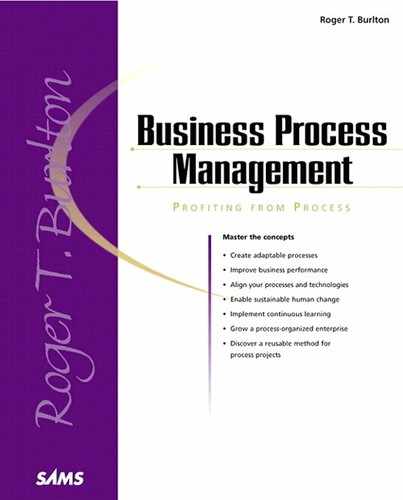Chapter 8. Human Change
|
In This Chapter |
The challenge of getting people to change typically becomes very visible shortly after any new business models are introduced or technologies are adopted. For some strange reason, the new approach is expected to magically go in unopposed and to be greeted with open arms. When the welcome mat doesn’t appear, organizations and project teams then scramble to recover and do some patch-up form of communication very late in the game—often with very poor results. A strong cultural bias exists against budgeting time and resources for activities that aren’t the initiative’s prime performance objective.
We seem to understand the building or conversion of the things that we are delivering. Things such as facilities are easy to see and understand in terms of their status of change. Measurements of “percentage complete” are often used to track progress. Activities such as data conversion and application migration are deemed necessary, and a budget of time and resources needed for them are expected.
But when do you convert or transform the most volatile and valuable resources: your people and your relationships with them? How can you provide new capability when the human element is the critical component, and it’s not in anyone’s plans or intentions? Transforming the humans can be the critical success factor in any rollout and the biggest risk factor if not done exceptionally well.
Clearly, perspectives vary on the issue of human transition, depending on whom you ask. At best, management and those charged with getting a transformation to work see human change as a necessary but bothersome task that just slows down the required “real” work. Staff and other humans affected by the change feel it as a personal impact that brings uncertainty and threatens them at the deepest levels. Managers often treat human transition—when they even acknowledge it—as a broad-based initiative involving a task sequence that must be conducted in a disciplined order and run it as a program or project. The humans expected to make the transition see it emotionally as something that will affect their jobs, careers, ability to care for their families, and their sense of competency as well as self-esteem. Management approaches the transition as a mass program. Staff members know that each one of them is different, with varying concerns that can’t simply be handled with mass approaches. Management believes that staff should understand why the change is necessary and that, if they don’t, better explanations will do the trick. Staff members know that, regardless of what management says, they will be uncertain as to what will really happen; there will be lots of unknowns, and changes won’t go as planned.
These perspectives on human transition are totally different. Management has an intimate knowledge of external business driver realities, and staff has an unparalleled knowledge of the realities of front-line work practices. It’s as if the senior management team has been equipped with only telescopes with a long future focus and can’t see anything about today’s details and realities up close. At the same time, the front-liners appear to have been issued microscopes to examine a tiny part of what is present and close. Neither tool helps one party see or understand the perspective of the other. It’s no wonder that large divergences often exist in approaches and acceptance. This is where professionals can help bridge the gap.
There’s no shortage of books and theories on getting people to change. Like the human being itself, this area is complex and often hard to understand. I won’t attempt to repeat all the good academic and professional work that has gone on before me. Instead, I will focus on a few fundamental ways of thinking about the challenges and present a few approaches that I have found to work well when taken seriously. Within these there is room for innovation and refinements and a home for other techniques. Without the fundamentals, however, other techniques might look like an insincere attempt to conduct some cosmetic activity that might make the trust factor between management and staff erode, and the effort fail.
The basis of my way of viewing this issue and the approach to change is twofold:
I believe that everyone, even in positive situations, goes through a worsening in attitude before perceptions improve, if they ever do.
I feel that the process of navigating this type of change is a journey with ups and downs and unanticipated scenarios. Although the specific circumstances will be unknown, the types of situations can be somewhat anticipated and planned by using an approach that focuses on people’s behaviors, beliefs, and concerns, whether they are rational or not. I believe this requires some active diligence to manage the journey and that it is “real work” with human behavioral change as the deliverable. It requires focussed and dedicated resources with accountabilities for transitioned people.
I will deal with these two major aspects and not delve into the other complexities. I will try to make this chapter as useful as possible by describing not only the desired conduct but also describing what to do to achieve it. Many models are descriptive but not helpful. As Sir Isaac Newton is attributed to have said, “I can describe gravity’s behavior, but I don’t know how it works.” I will try to do a little better than Newton.
